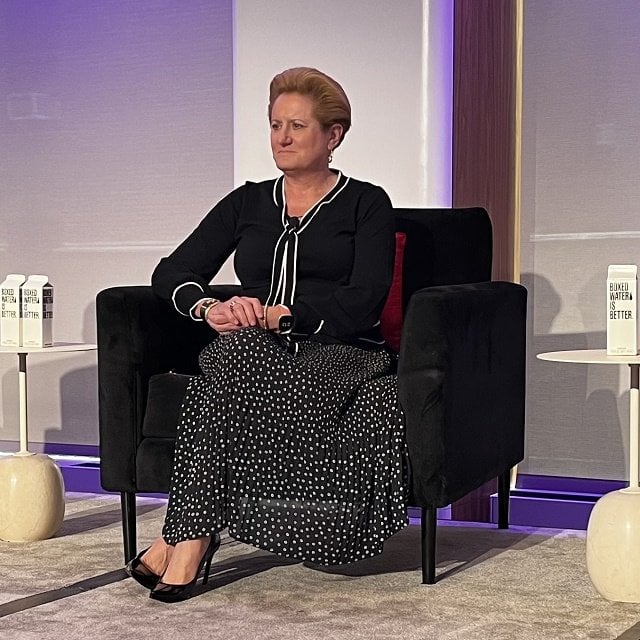Guggenheim CIO Worries About Office Building Price Crash

What You Need to Know
Prices in some cities could fall 40%, Anne Walsh said at S&P Global Ratings’ insurance conference.
Rating analysts doubt higher rates or a recession will do much to life insurer ratings.
Prudential CEO Charles Lowrey said the industry needs capital to serve retirees and close a $12 trillion life insurance gap.
Rating agencies doubt economic turmoil will do much to hurt U.S. life insurers’ financial stability over the next 12 to 18 months, but the insurers’ chief investment officers are preparing for rough seas for the assets in the portfolios.
Anne Walsh, the chief investment officer at Guggenheim Partners — which manages money for Security Benefit and other life and annuity issuers — said Tuesday, at an S&P Global Ratings insurance conference in New York, that her company is managing its portfolios defensively, and that she fears that office building prices in some markets could fall as much as 40% as owners and lenders adjust to businesses continuing to let workers do much of their work at home.
Many sectors and subsectors could perform well, but unusual, extreme bursts of “tail risk,” or “idiosyncratic risk,” could hurt life insurers that have failed to trim their sails early enough, Walsh said.
“It’s hard to move a big ship in the ocean very quickly,” she said.
Walsh appeared in an insurance company chief investment officer panel in New York, at an insurance conference organized by S&P Global Ratings. The other CIOs —Timothy Boroughs of Chubb, Leena Punjabi of F&G Annuities & Life and Emilia Wiener of TIAA — also talked about efforts to batten down the hatches.
What It Means
The executives who oversee the investment operations for the companies behind your clients’ life insurance policies and annuity contracts are not sure what to expect.
Rating Agency Views
One topic on the S&P conference agenda is an update to the company’s own grading standards.
Another is the impacts of factors such as the recent spike in interest rates, a flurry of bank failures and signs that efforts to get employees to return to work in offices may have stalled.
Carmi Margalit, S&P’s life sector lead, said at the conference that it appears to be unlikely that even a severe recession and commercial real estate slump could have much effect on the solvency of the U.S. life insurers it rates.
Moody’s Investors Service released a report of its own Tuesday suggesting that, although the office market could go through hard times, life insurers appear to have strong buffers against the effects of any commercial real estate slump.
The CIO Panel
U.S. insurers collectively oversee about $8 trillion in assets, with much of that total invested in bonds, mortgages, mortgage-backed securities and related types of assets.
Boroughs, the Chubb CIO, said the property and casualty insurer is now taking a more cautious approach.
Wiener, the TIAA CIO, talked about efforts to increase credit quality, by looking at each bond in the portfolio one at a time, and the need for a big life insurer to begin such a portfolio process early. “It’s hard to maneuver the Queen Mary,” she said.
Punjabi, the CIO at F&G, which has close ties to Blackstone, noted that a downturn can create opportunities for life insurers’ investment managers as well as problems.
Banks are lending less and trying to sell some of the loans already on their books, Punjabi said.
For Blackstone, she said, that creates attractive opportunities to buy and originate loans.
Walsh suggested that serious pain could lie ahead for U.S. banks, because any pain they have suffered at this point is the result of rising interest rates and depositor concerns, not with any serious problems with borrower defaults.




